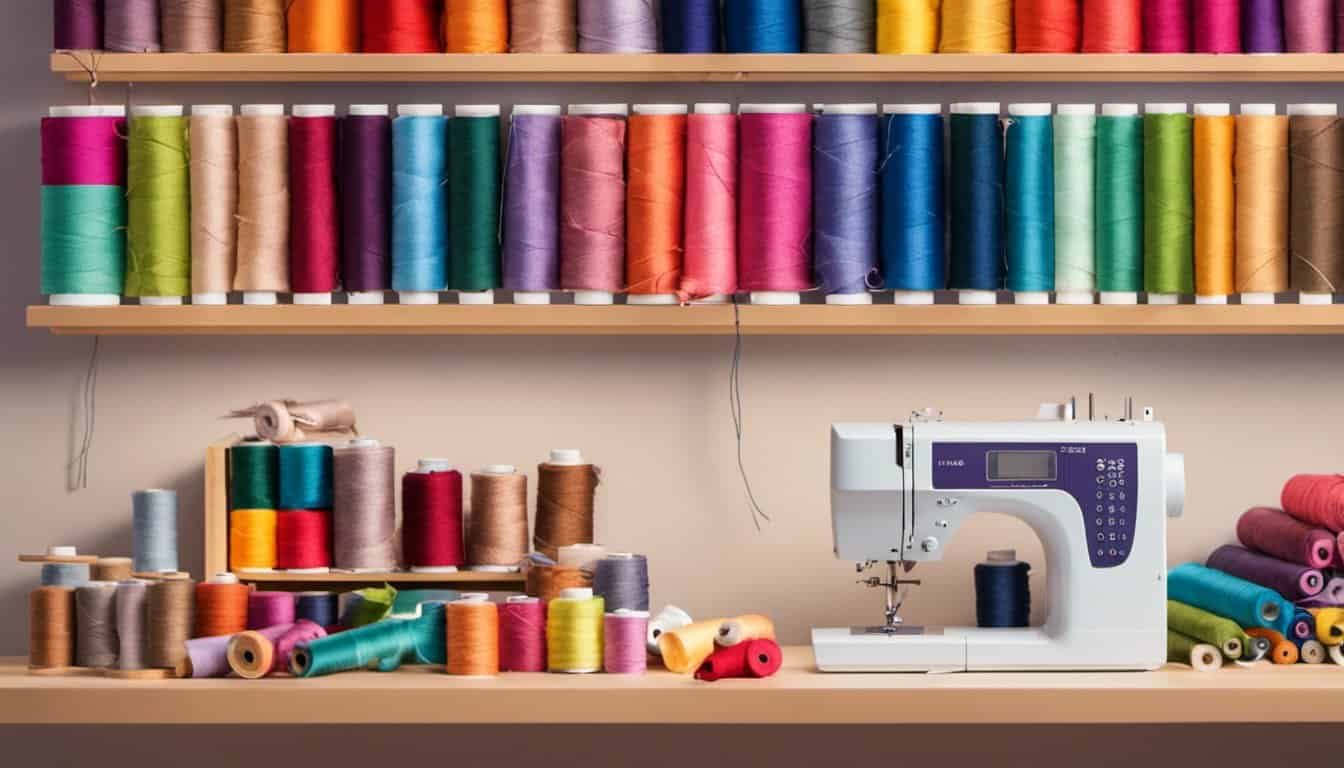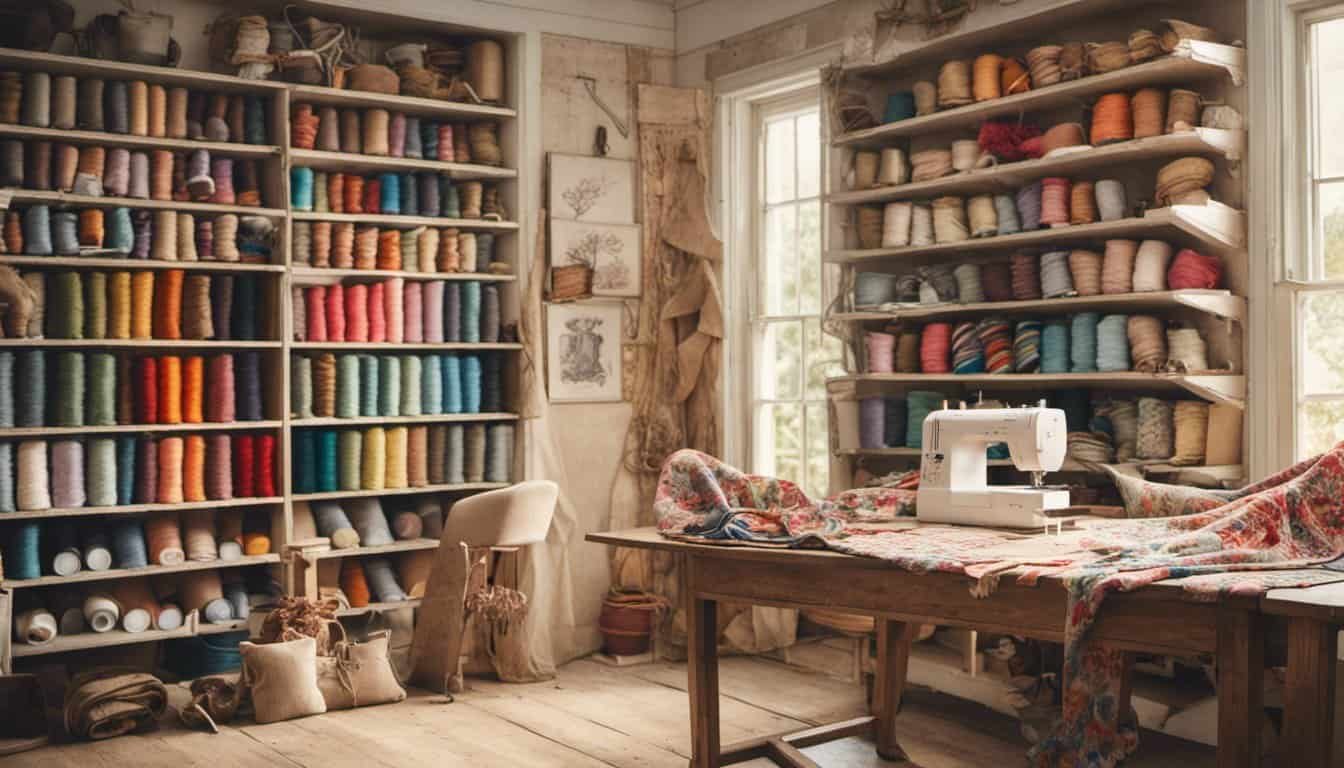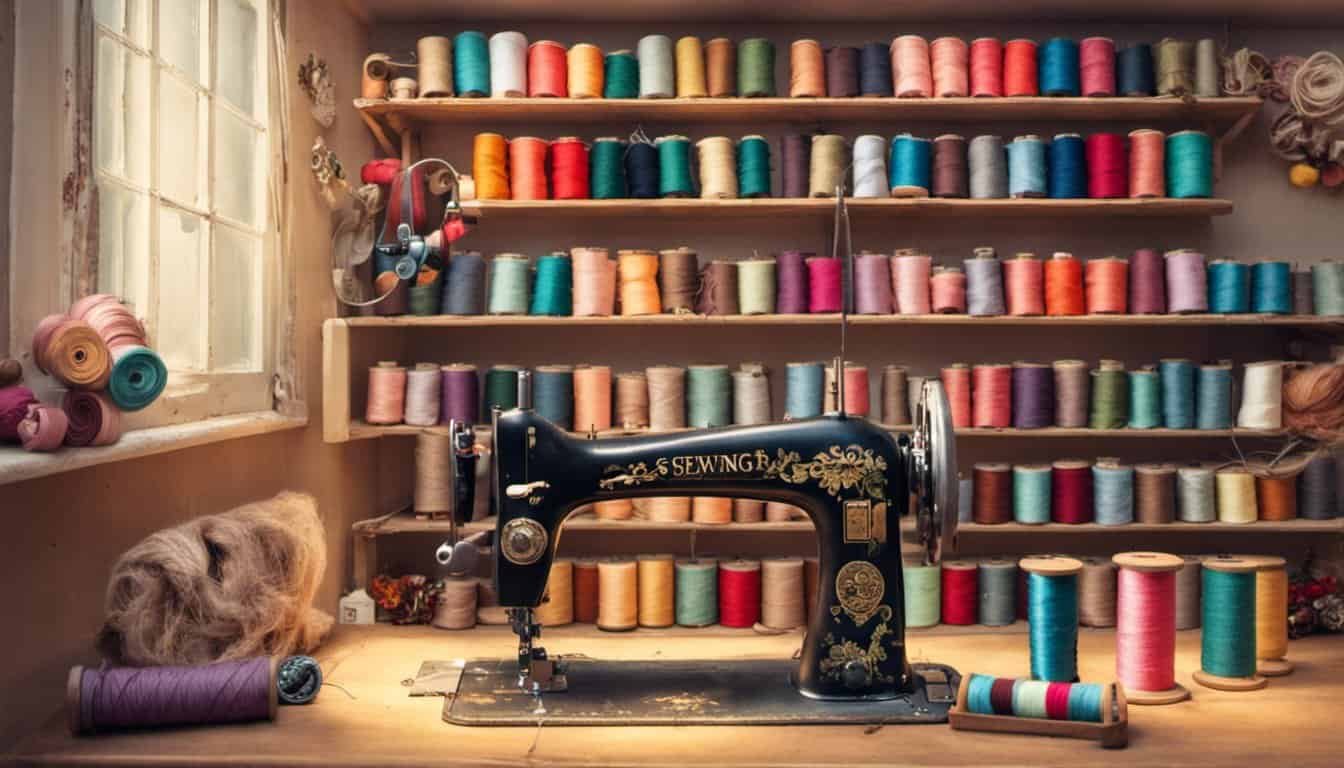Starting a new sewing project is exciting, but threading your machine for the first time can feel a bit overwhelming. I remember feeling puzzled when I first faced those tangled threads and confusing guides.
In this article, I’ll share the simple steps that made threading my sewing machine a breeze. With a friendly approach and easy-to-follow instructions, you’ll gain the confidence to get your machine ready and start stitching in no time.
Gather the Necessary Materials
Before threading my sewing machine, I ensure I have all the essential materials within reach. This preparation makes the threading process smooth and efficient.
Selecting the Right Thread
Choosing the correct thread is crucial for optimal machine performance. I consider the following factors:
- Fabric Type: For lightweight fabrics like silk, I use fine threads, whereas thicker fabrics like denim require stronger threads.
- Thread Weight: Common weights range from 30wt for delicate projects to 18wt for heavy-duty sewing.
- Material: Polyester thread offers durability and flexibility, while cotton thread provides a natural finish.
- Color Matching: I select thread colors that complement or contrast with my fabric to achieve the desired aesthetic.
Choosing the Appropriate Needle
- Needle Size: Sizes range from 60/8 for lightweight fabrics to 120/19 for heavy materials. I match the size to my fabric thickness.
- Needle Type: Universal needles work well for most fabrics. For specialized projects, I use ballpoint needles for knits or sharp needles for woven fabrics.
- Needle Quality: High-quality needles reduce the risk of breakage and skipped stitches. I replace needles regularly to maintain performance.
- Brand Compatibility: I ensure the needle brand is compatible with my sewing machine for optimal results.
Wind and Insert the Bobbin
Winding and inserting the bobbin correctly ensures smooth sewing. Here’s how I handle each step.
Winding the Bobbin Correctly
- Place the Thread on the Spool Pin: I secure the thread spool on the top spool pin.
- Guide the Thread through the Tension Disc: I ensure the thread moves smoothly without obstruction.
- Select the Bobbin Winding Function: I set my machine to the bobbin winding mode as per the manual.
- Engage the Bobbin Winding Mechanism: Turning the handle or pressing the start button begins winding.
- Wind Until Full: I stop once the bobbin is fully wound to prevent thread breakage.
Inserting the Bobbin Properly
- Remove the Bobbin from the Winding Protector: I take the bobbin in the direction indicated by the arrows.
- Insert the Bobbin into the Bobbin Case: I ensure it spins clockwise and sits securely.
- Pull the Thread Through the Slot: I gently guide the thread upwards towards the needle area.
- Replace the Bobbin Case or Insert into the Shuttle: Depending on my machine model, I close the case or secure the shuttle.
- Hold the Thread and Release the Tension Dial: I make sure the bobbin is in place before resuming sewing.
| Step | Action |
|---|---|
| 1 | Place thread on spool pin |
| 2 | Guide thread through tension disc |
| 3 | Select bobbin winding function |
| 4 | Engage winding mechanism |
| 5 | Wind until bobbin is full |
Proper bobbin winding and insertion prevent common sewing issues like thread jams and uneven stitching. Following these steps helps maintain your machine’s performance.
Thread the Upper Thread
Threading the upper thread correctly ensures smooth stitching. Follow these steps to guide the thread through your sewing machine.
Following the Thread Path Diagram
Refer to your machine’s thread path diagram, usually located inside the lid or in the manual. Begin by placing the spool on the spool pin. Pull the thread through the spool cap and guide it to the tension discs. Loop the thread around each tension disc as indicated. Continue down to the take-up lever, pulling the thread through the lever’s hole. Finally, guide the thread down the front or side of the machine to the needle.
Adjusting Tension Settings
Proper tension prevents puckering and uneven stitches. Locate the tension dial, typically found near the top of the machine. Start with a medium setting, such as 4. Test the tension by sewing on a scrap fabric. If the stitches appear too tight, lower the tension by one setting. For loose stitches, increase the tension by one setting. Repeat the test until the stitches are balanced and consistent.
| Tension Setting | Stitch Appearance |
|---|---|
| 2 | Looser stitches |
| 4 | Balanced tension |
| 6 | Tighter stitches |
Adjust gradually to achieve optimal results without overcomplicating the process.
Thread the Needle
Properly threading the needle ensures smooth and consistent stitching. Follow these steps to install the needle correctly.
Proper Needle Installation
- Raise the Presser Foot
Lifting the presser foot releases tension and allows easy access to the needle area.
- Loosen the Needle Clamp Screw
Turning the screw counterclockwise frees the needle for removal or replacement.
- Remove the Old Needle
Gently pull the needle downward and out of the needle clamp, ensuring it’s fully detached.

- Select the Correct Needle
Choose a needle size and type that match your fabric and thread requirements.
- Insert the New Needle
Slide the needle through the clamp’s needle plate from front to back, ensuring the flat side faces the correct direction.
- Tighten the Needle Clamp Screw
Secure the needle by turning the screw clockwise until it’s firmly in place, but avoid over-tightening.
- Lower the Presser Foot
Resetting the presser foot prepares the machine for stitching.
- Test the Needle Installation
Turn the handwheel to ensure the needle moves smoothly without obstruction.
« How to Start Sewing Clothes: A Beginner’s Roadmap to Master Your First Projects
10 Secrets to How to Sew a Simple Tote Bag for Beginners You Must Try »
Following these steps guarantees proper needle installation, preventing common sewing issues like skipped stitches or needle breakage.
Test Your Setup
Testing your sewing machine ensures proper threading and optimal performance. Follow these steps to verify your setup:
- Position Fabric: Place a piece of scrap fabric under the needle, aligning it with the center mark.
- Select Stitch: Choose a straight stitch on the machine’s stitch selector.
- Set Tension: Adjust the thread tension to a medium setting, typically around 4 on a scale of 1 to 10.
- Lower Presser Foot: Secure the fabric by lowering the presser foot.
- Start Sewing: Press the foot pedal to begin sewing, observing the stitch formation.
- Inspect Stitches: Ensure stitches are even and balanced on both the top and bobbin threads.
- Adjust If Needed: If stitches appear too tight or loose, tweak the tension settings accordingly.
- Repeat Test: Sew another section to confirm adjustments have achieved desired results.
By systematically following these steps, you confirm that your sewing machine is correctly threaded and ready for your projects.
Tips for Successful Threading
Organize Your Workspace
Keeping your sewing area tidy prevents thread tangles and confusion. I arrange all necessary materials within reach before starting. This includes thread spools, scissors, needles, and the sewing machine manual.
Choose Quality Thread
Using high-quality thread reduces breakage and ensures smooth stitching. I select threads based on fabric type, weight, and color matching. Opting for strong, durable threads enhances overall sewing performance.

Follow the Thread Path Diagram
Adhering to the machine’s thread path diagram ensures proper threading. I carefully guide the thread through each designated point, avoiding missed steps that can cause stitching issues. Referencing the manual helps maintain accuracy.
Maintain Correct Tension
Proper tension settings are crucial for balanced stitches. I start with a medium tension and adjust as needed. Testing on scrap fabric allows me to fine-tune tension, preventing puckering and uneven stitching.
Secure the Thread Ends
Tying knots at both ends of the thread prevents unraveling during sewing. I ensure the upper thread and bobbin thread are securely anchored before beginning any project. This step minimizes interruptions caused by thread slippage.
Use the Right Needle
Selecting the appropriate needle type and size enhances threading success. I match the needle to the fabric and thread, ensuring compatibility. A suitable needle reduces the risk of thread breaks and skipped stitches.
Practice Patience
Taking time to thread the machine correctly avoids frustration and errors. I follow each step methodically, ensuring the thread flows smoothly through all guides and tension discs. Patience leads to a properly threaded machine ready for sewing.

Regular Maintenance
Cleaning and maintaining your sewing machine supports consistent threading. I regularly remove lint and debris from the machine, especially around the thread path and bobbin area. Routine maintenance prevents build-up that can interfere with threading.
Test Before Sewing
Running a test stitch on scrap fabric verifies the threading setup. I inspect the stitches for evenness and adjust settings if necessary. This final check ensures the machine is correctly threaded and functions smoothly.
Keep Spare Threads and Needles
Having extra threads and needles on hand prepares you for unexpected issues. I store spare spools and needles nearby, allowing quick replacements if a thread breaks or a needle dulls. This preparedness keeps sewing projects on track.
Conclusion
Getting your sewing machine threaded for the first time might seem daunting but it’s totally manageable. With the right steps and a bit of patience you’ll soon find yourself ready to start your creative projects.
Remember to stay organized and take your time as you set everything up. Each step builds your confidence and ensures smooth sewing down the line. Don’t hesitate to refer back to your machine’s manual whenever you need a quick reminder.

Happy sewing! Embrace the process and enjoy bringing your ideas to life one stitch at a time.

















